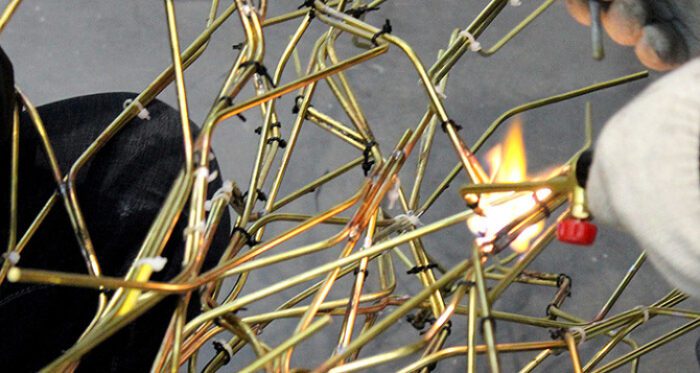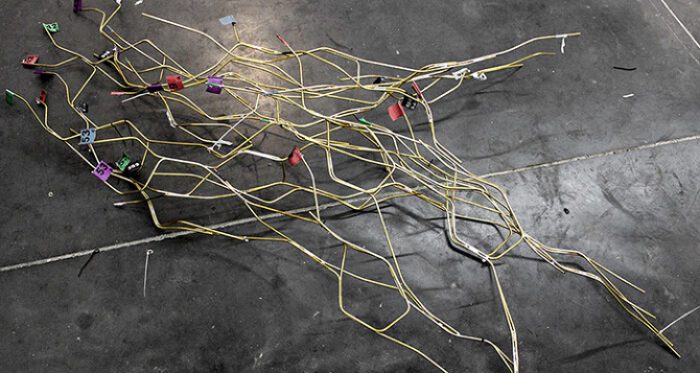Brass Swarms | Kokkugia
Using advanced algorithmic strategies and robotic fabrication, Kokkugia, an experimental architecture research practice has come up with a fascinating prototype called the Brass Swarm. As the name suggests, the project involves creating intricate, continuous surfaces using Brass rods that are bent and welded together to create a cohesive three-dimensional form.
The algorithmic strategy that the Kuka Agilus robots employ to create the complex topological surface seeks to emulate the self-organizing spatial patterns that are also witnessed in natural conditions such as arid ecosystems, tidal wetlands, peat soils etc. These natural self –organizing patterns are created due to the interactions between organisms and their natural environment. The Brass Swarm project adopts a similar theoretical approach, but the interaction happening here is between algorithmic coding and robotic fabrication tools. The multi-agent algorithmic strategy that the process follows helps in self-organizing a set of agents which have a body of their own and are able to consolidate into a cohesive and continuous network of brass rods.  Each individual brass rod or agentBody follows a specific set of constraints that are encoded in the generative algorithm being followed by the robots. These constraints enable the robots to bend each section of rod to a specific angle, and also impart a specific length to each segment of the complex geometry, which is a result of the spatial self-organization process. The algorithm is designed to help in striking a balance between the complex design behavior and more realistic fabrication process. The end result of the whole process is a prototype that provides an exemplary technique for architectural design, which astutely engages algorithmic computation and robotic fabrication.
Each individual brass rod or agentBody follows a specific set of constraints that are encoded in the generative algorithm being followed by the robots. These constraints enable the robots to bend each section of rod to a specific angle, and also impart a specific length to each segment of the complex geometry, which is a result of the spatial self-organization process. The algorithm is designed to help in striking a balance between the complex design behavior and more realistic fabrication process. The end result of the whole process is a prototype that provides an exemplary technique for architectural design, which astutely engages algorithmic computation and robotic fabrication.

